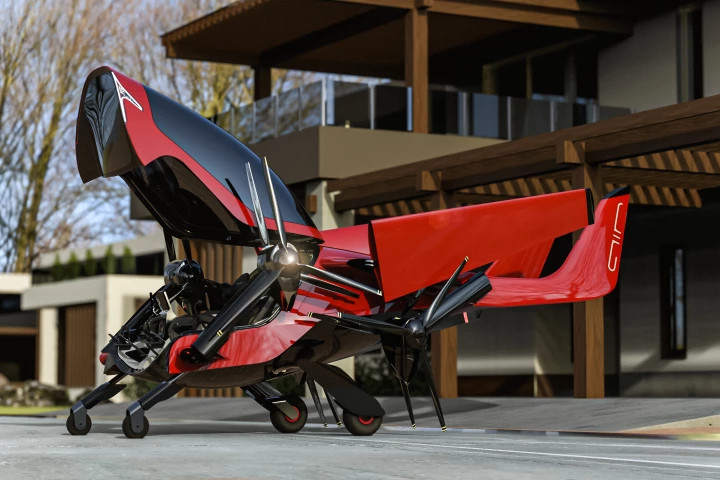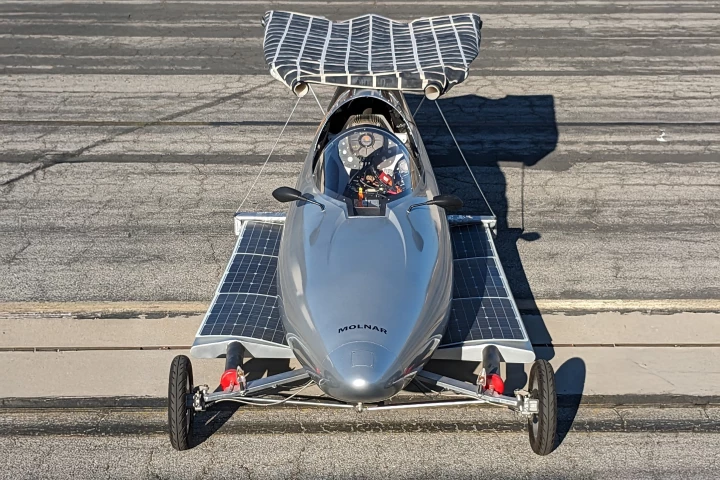Aircraft
From autonomous flying-taxis to experimental hypersonic aircraft, check out what's new in the world of aviation.
Top News
-
Electra's aircraft looks conventional enough, but it generates ludicrous amounts of lift, to take off and land at incredibly slow speeds, using almost no runway. With US$9 billion in pre-orders, it's outselling anything from the eVTOL world.
-
Boom's XB-1 supersonic jet took its fifth test flight last week setting a few new records. The XB-1 is the one-third scale platform that Boom is using for its eventual Overture program aiming to bring back commercial supersonic passenger flight.
-
The world's first flight test for an aerospike rocket engine ended in disaster, but Polaris Aerospace is back on track, preparing to fly second- and third-generation prototypes for its MIRA supersonic/hypersonic aircraft platform within weeks.
Load More
Latest News
-
June 29, 2025 | David SzondyElectric-hybrid aircraft have taken another step from the exotic to the practical with VoltAero unveiling the production model of its Cassio 330 five-seat regional passenger aircraft that combines quiet efficiency with the most spacious cabin in its class.
-
June 12, 2025 | C.C. WeissEDAG Group has a long history of creating some of the wildest vehicle concepts out there, including a pop-up sports car camper. Now it's jumping into the next generation of mobility, building the structure for the production AIR One short-hop eVTOL.
-
June 09, 2025 | Abhimanyu GhoshalMore than 20 years after the last commercial Concorde flight, President Trump has signed an executive order to repeal the ban on supersonic flight over land across the US. That paves the way for companies building the ultra-fast planes of the future.
-
June 07, 2025 | Paul RiddenAfter flying the first production ALIA CX300 electric aircraft last November, BETA Technologies has now zipped four passengers into the John F. Kennedy International Airport, marking a key development milestone.
-
June 03, 2025 | Paul RiddenArcher has released video footage of the first flight of its Midnight eVTOL with a pilot at the controls, though the aircraft rolled down a runway to take off rather than using its rotors to lift it vertically.
-
May 31, 2025 | David SzondyHermeus seems dead keen on fast-tracking its way to hypersonic passenger flight. Its uncrewed subsonic Quarterhorse Mark 1 prototype has completed its maiden flight in the skies over Edwards Air Force Base in California on May 21, 2025.
-
May 25, 2025 | David SzondyIn what may be a world first, Venus Aerospace has, for the first time in the US, successfully flown a Rotating Detonation Rocket Engine (RDRE) that uses supersonic explosions to create thrust. Such engines could help propel future hypersonic vehicles.
-
May 17, 2025 | Joe SalasHorizon’s Cavorite X7 just made aviation history by pulling off the world's first stable fan-in-wing transition flight. The hybrid eVTOL can take off like a helicopter, cruise like a plane, and recharge its batteries mid-flight for quick turnarounds.
-
May 16, 2025 | David SzondyWho needs windows when you can have superefficient transonic passenger flight? That seems to be the reasoning behind Otto Aviation's Phantom 3500 jet aircraft that dumps the portholes in favor of super-laminar flow to lose weight and burn less fuel.
-
May 12, 2025 | Loz BlainMore than 30 years in the making, this long-range, high-speed, flight-tested, two-seat flying car is slated to be certified later this year, with customer deliveries beginning in early 2026. The team tells us an amphibious version could follow.
-
May 07, 2025 | Joe SalasThe word "flying car" immediately puts visions of "The World of Tomorrow" in my head; retro-looking flashy contraptions. If you were to ask Dezső Molnár what his vision of a flying car looked like, he'd simply show you the one he's building now.
-
May 04, 2025 | Joe SalasA jet-powered "speeder bike" flying through the forest on May the 4th? We speculate on the Volonaut Airbike, question the wild claims, and crunch the numbers to see if it's legit – or just really cool VFX. Spoiler alert: we want it to be real.
-
May 04, 2025 | Abhimanyu GhoshalAltoVolo is aiming high with its foray into eVTOLs. It plans to offer a personal hybrid-electric aircraft that will deliver 510 miles of range, and hit cruise speeds up of to 220 mph – while making 80% less noise than a helicopter.
-
April 29, 2025 | David SzondyJoby Aviation achieved a major milestone on April 22, 2025 when it became the first company to fly an all-electric tilt-rotor eVTOL with a pilot aboard as it transitioned from horizontal to vertical flight and back again.
-
April 28, 2025 | David SzondyNASA and Boeing have effectively cancelled the X-66 Transonic Truss-Braced Wing (TTBW) concept demonstrator aircraft. Officially described as a "pause," development of the thin-wing airplane is being halted in favor of ground-based testing.
Load More

















